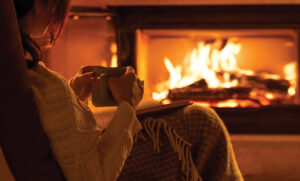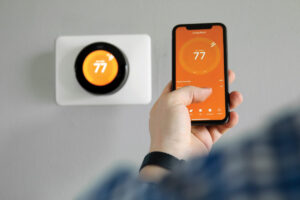 It looks like spring has finally arrived in Illinois. The grass has turned green, trees are budding and the daffodils have poked out their heads. And as we learned in the March issue, it was all made possible by the sun.
It looks like spring has finally arrived in Illinois. The grass has turned green, trees are budding and the daffodils have poked out their heads. And as we learned in the March issue, it was all made possible by the sun.
In the April issue, we introduced the three methods of heat transfer and discussed the one method called conduction. Conduction is primarily the heat transfer between solids and/or liquids. If you touch a hot 150-degree pan in the oven with a bare hand or place it in 150-degree water, you understand how fast heat can move from one item to another by conduction. A product that is a good conductor of heat is never a good insulator.
Now, let’s look at convection, another form of heat transfer. According to the dictionary, convection is the transmission of heat by the mass movement of the heated particles in air or gas.
In our discussion, I think that air will always be involved. That means that convection occurs anytime that air comes in contact with anything of a different temperature. Keep in mind that heat always moves toward cold, and moisture always moves toward dry. When cold dry air comes in contact with warm humid air, a tremendous amount of energy can be released. This is how thunderstorms are formed.
As in the 150-degree oven that I mentioned above, conduction and convection often occur near the same location. You can put your hand in the 150-degree air for several seconds without any discomfort. Your hand does slowly get warmer by convection, but the moment that you touch something metal that is the same temperature, it is instant pain from conduction. Notice how fast the hot oven air rushes toward you when you open the oven door. Notice how fast your glasses fog over when you get out of your air-conditioned automobile and meet the hot, humid outside air. Another example is that you may be able to leave your hand in a 30-degree freezer for several minutes with no problem at all, but the moment that you touch a frozen solid item, your fingers will get cold immediately. Notice that the heat moves to your hand in the oven but it moves from your hand in the freezer.
When you sit close to a window on a 50-degree winter night, your body heat will try to leave you and travel to the window, but you will probably not even know it. But if it is 20 degrees outside, it may feel like a breeze is blowing on your arm. The heat on your bare arm is simply leaving faster at 20 degrees than at 50 degrees.
One of the best ways to explain convection is to place a heater on one end of a large empty room and notice how over time it also heats the other end of the room. That is the result of warm air molecules heating the adjacent cooler air molecules until the whole room is heated.
Folks, I could list many examples of heat moving from one location to another, and every one of them would be the result of conduction, convection and/or radiation. You might enjoy making a list of other examples that show how heat moves by conduction or convection.
In the next issue, we will discuss radiation and the ways that all three methods of heat transfer relate to energy efficiency in a house. In the meantime, enjoy the beautiful weather.







